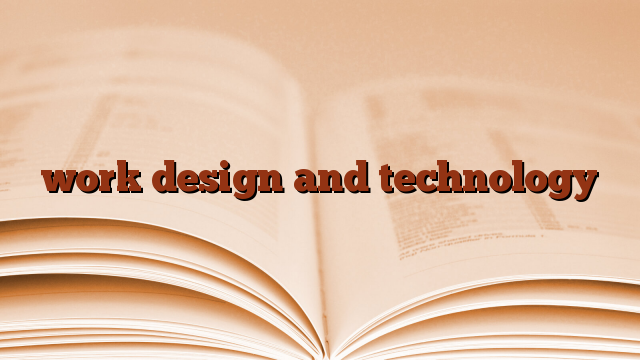In order to increase employee job satisfaction and productivity, technology is being used by companies to redesign jobs and working hours. Technology is changing the organization’s working style and the people’s performance analysis process. Technology is not just a tool that converts input into output. This term is used as such machinery and instrument that is inherently sophisticated and develops output through computers and other electronic instruments. This technology is conquering the branches of industry, and now fabrics can be produced much faster and faster than before.
Electronic tools designed for money transfer and financial management open dynamic progress in banking and finance sector. The workplace style and work life of employees are influenced by technology. Continuous improvement is demonstrated in every organization to increase productivity and efficiency at the same time. This continuous improvement requires an adjustment of all organizational processes. The term re-engineering comes from developing a better electronic version. Fundamentally, in any organization, re-engineering requires a change in the way we do things.
Its main rule is to start from a plan sheet to review and change the current management system. This redesign means revamping the process by removing outdated elements from each working design.
Management’s responsibility is to understand the key elements and core processes that bring value to organizations’ particular competencies. Since the early 1990s, process redesign has been popular and all major companies in European countries and America have introduced some changes to support work redesign. The employees who continue their work after the transformation process in the organization found that they are not doing the same work. The process of redesigning work can include more employee service, interaction with customers, coordination with suppliers and colleagues, increased accountability, creativity, tracking and incentives.
It is mostly hard for employees and takes 3 to 5 years to complete the whole process reengineering. During this time, workers become anxious as they take on more responsibility, challenges, a new style of work, and the risks that come with it. Implications for process transformation are designed and selected on an individual and group basis. Employee motivation and reinforcement, cyber loafing and ethics-related steps are taken on an individual basis. In addition to decision-making, communication and coordination as well as organizational policy are viewed differently; for group-level implications.
With the introduction of new technologies in the workplace, work rules and interpersonal relationships are also changing. In order to analyze work tasks, their properties must first be understood. These job attributes collectively affect different jobs and determine employee performance, motivation, and relationships. Task attributes primarily include professional diversity, task identity and importance, independence provided, and feedback. Taking these job characteristics into account, the development needs of employees for a specific job can be assessed; based on core work dimensions, critical psychological state, and personal and work outcomes.
The technology is also assisted in creating an ideal working design to improve overall performance. Companies are looking for ways to offer alternative working hours for employees. Employees need flexibility with changing work and working time options as they act as a strategic tool in organizations.
Thanks to Qaiser Fayyaz | #work #design #technology

Leave a Reply